How to Become a Curator
Part 1 of 3:
Getting Started
-
 Understand the job. A museum curator is essentially a manager of the museum's collections and exhibits. In this job, you'll be responsible for a variety of different tasks, including:[1]
Understand the job. A museum curator is essentially a manager of the museum's collections and exhibits. In this job, you'll be responsible for a variety of different tasks, including:[1]- Deciding the layout and content of new exhibits.
- Cataloging the museum's collections.
- Assisting in the preservation of materials.
- Delegating duties to other museum staff.
- Managing the museum budget.
- Giving talks or presentations to visitors.
- Assessing new materials.
-
 Understand the educational requirements. At the very least, you'll need a bachelor's degree in museum studies or a related field. Most curators have master's or even Ph.D. degrees. This amounts to several years of work, so make sure you're ready to make that kind of commitment.[2]
Understand the educational requirements. At the very least, you'll need a bachelor's degree in museum studies or a related field. Most curators have master's or even Ph.D. degrees. This amounts to several years of work, so make sure you're ready to make that kind of commitment.[2] -
 Find a field that interests you. There are a multitude of different museums out there, all specializing in different topics. You may be interested in art, history, science, or sports. There are museums for all of these topics and more. When you decide what field you like, you can tailor your education and experience to that topic. Figuring this out early will make you a better job candidate and help you land the position you want.
Find a field that interests you. There are a multitude of different museums out there, all specializing in different topics. You may be interested in art, history, science, or sports. There are museums for all of these topics and more. When you decide what field you like, you can tailor your education and experience to that topic. Figuring this out early will make you a better job candidate and help you land the position you want.
Part 2 of 3:
Getting the Education
-
 Earn your bachelor's degree. This is the minimum requirement you'll need for entry into the curating field.
Earn your bachelor's degree. This is the minimum requirement you'll need for entry into the curating field.- Major in a field relevant to the type of museum you want to work in. Whether your interest is art history, anthropology, archaeology, etc., make sure you're educated in the field you want to specialize in.
- Consider business or marketing electives. Curators are often involved in the business side of running a museum. Gaining some experience with these tasks will not only bolster your application, but will also help you make your museum successful.[3]
-
 Apply to a master's degree program. Although you may be able to enter the museum field with only a bachelor's, most curating positions require at least a master's degree.[4]
Apply to a master's degree program. Although you may be able to enter the museum field with only a bachelor's, most curating positions require at least a master's degree.[4]- Look for a program that offers a degree for your interest. Narrow down your field to make it as specific as possible. For example, art history is a broad topic. Focusing on Renaissance Italian art with make you a specialist.
- Look at the faculty at programs you're interested in. Confirm that there are professors who specialize in your field. This is important because you'll need an adviser to oversee your master's thesis.
-
 Complete your master's degree. Meet all the degree requirements and write your master's thesis. Remember to make sure your thesis reflects your specialty. If you're looking to work in an American history museum, your thesis shouldn't be about medieval France.
Complete your master's degree. Meet all the degree requirements and write your master's thesis. Remember to make sure your thesis reflects your specialty. If you're looking to work in an American history museum, your thesis shouldn't be about medieval France. -
 Consider a second master's degree. It can give you an edge on the job market to have two master's degrees: one in your field of study and one in museum studies. That way you can demonstrate that you have expertise in the museum's specialty and also know how museums work.[5]
Consider a second master's degree. It can give you an edge on the job market to have two master's degrees: one in your field of study and one in museum studies. That way you can demonstrate that you have expertise in the museum's specialty and also know how museums work.[5] -
 Consider earning a Ph.D. While a master's degree will suffice for many museums, some larger museums require curatorial applicants to hold doctorates in a specific field. Investigate museums you would be interested in working in and see the degree requirements. If all your choices require Ph.D.'s, you'll have to continue your studies.[6]
Consider earning a Ph.D. While a master's degree will suffice for many museums, some larger museums require curatorial applicants to hold doctorates in a specific field. Investigate museums you would be interested in working in and see the degree requirements. If all your choices require Ph.D.'s, you'll have to continue your studies.[6]- Remember that a Ph.D. will require several more years of commitment. Confirm that this is still your preferred career before investing more time in your education.
Part 3 of 3:
Getting Experience
-
 Get experience early. Education alone won't make you qualified to be a curator. Positions typically require several years of museum experience before applicants are even considered. Get ahead of the curve by getting museum experience as early as possible, ideally in college or even high school. That way, by the time you finish your education, you'll have years of experience under your belt to bolster your application.
Get experience early. Education alone won't make you qualified to be a curator. Positions typically require several years of museum experience before applicants are even considered. Get ahead of the curve by getting museum experience as early as possible, ideally in college or even high school. That way, by the time you finish your education, you'll have years of experience under your belt to bolster your application. -
 Complete internships. Many museums and historical societies offer internships for high school and college students. These are a great way to get experience and make contacts in the museum field.[7]
Complete internships. Many museums and historical societies offer internships for high school and college students. These are a great way to get experience and make contacts in the museum field.[7]- Do an internet search and see if museums or historical societies near you offer internships for students.
- If you're in college or graduate school, visit your department office or the career center and ask if they have any information on internships. Many schools have partnerships with nearby institutions to offer credit for students who intern with them.
- Remember at this early level, any experience is good for your resume. Don't pass up internship opportunities because they aren't strictly what you're interested in. You might even find a new interest you had not considered before.
- Some degree programs require internships. If so, great, but you shouldn't wait for your school to make you do an internship.
-
 Volunteer at museums or historic sites. Even if institutions near you don't offer internships, most still need volunteers. There are a variety of jobs you can volunteer for and gain museum experience.
Volunteer at museums or historic sites. Even if institutions near you don't offer internships, most still need volunteers. There are a variety of jobs you can volunteer for and gain museum experience. -
 Work lower-level museum jobs. It is very unlikely you'll come right out of school with a position as a curator. You'll probably have to work a number of jobs before becoming a curator. You can start as a research associate or cataloger as an entry into the museum profession. Then after a few years, you may be able to work your way up to a curator position.[8][9]
Work lower-level museum jobs. It is very unlikely you'll come right out of school with a position as a curator. You'll probably have to work a number of jobs before becoming a curator. You can start as a research associate or cataloger as an entry into the museum profession. Then after a few years, you may be able to work your way up to a curator position.[8][9]- Don't be afraid to switch institutions. Many curators worked in a few museums before eventually rising to a curatorial position.
5 ★ | 2 Vote
You should read it
- The world's first NFT museum
- How to make 360-degree logos on Camtasia Studio
- Instructions on how to post 360-degree videos on Facebook
- A painting of Van Gogh has just been stolen in the middle of the museum closing due to corona virus
- How to set a 360-degree photo as a cover image on Facebook
- How to create a 360-degree computer Facebook cover photo


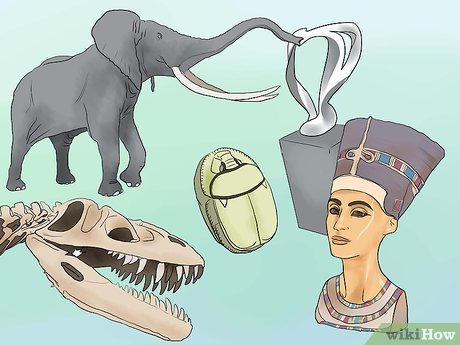
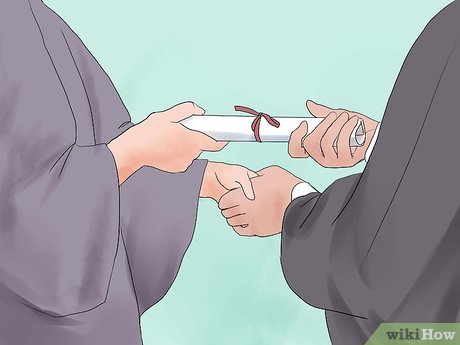



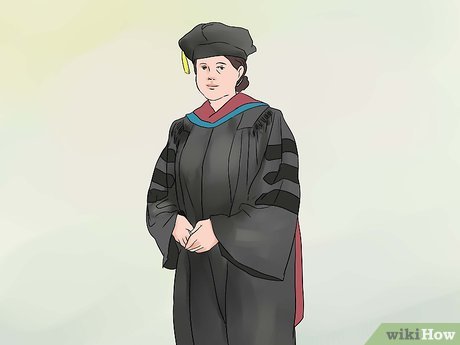

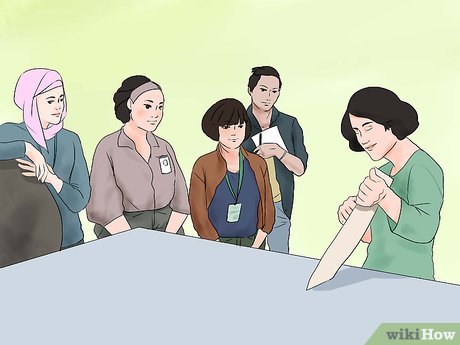
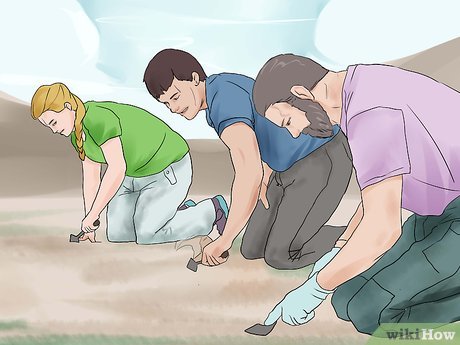
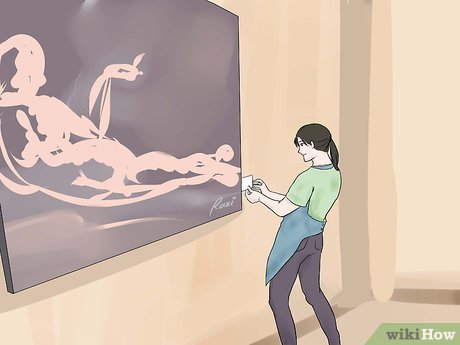
 How to Lecture Well
How to Lecture Well How to Get an Undergraduate Research Position
How to Get an Undergraduate Research Position How to Be an Etymologist
How to Be an Etymologist How to Become a Paraprofessional
How to Become a Paraprofessional How to Become a Psychology Professor
How to Become a Psychology Professor How to Become a College Professor
How to Become a College Professor